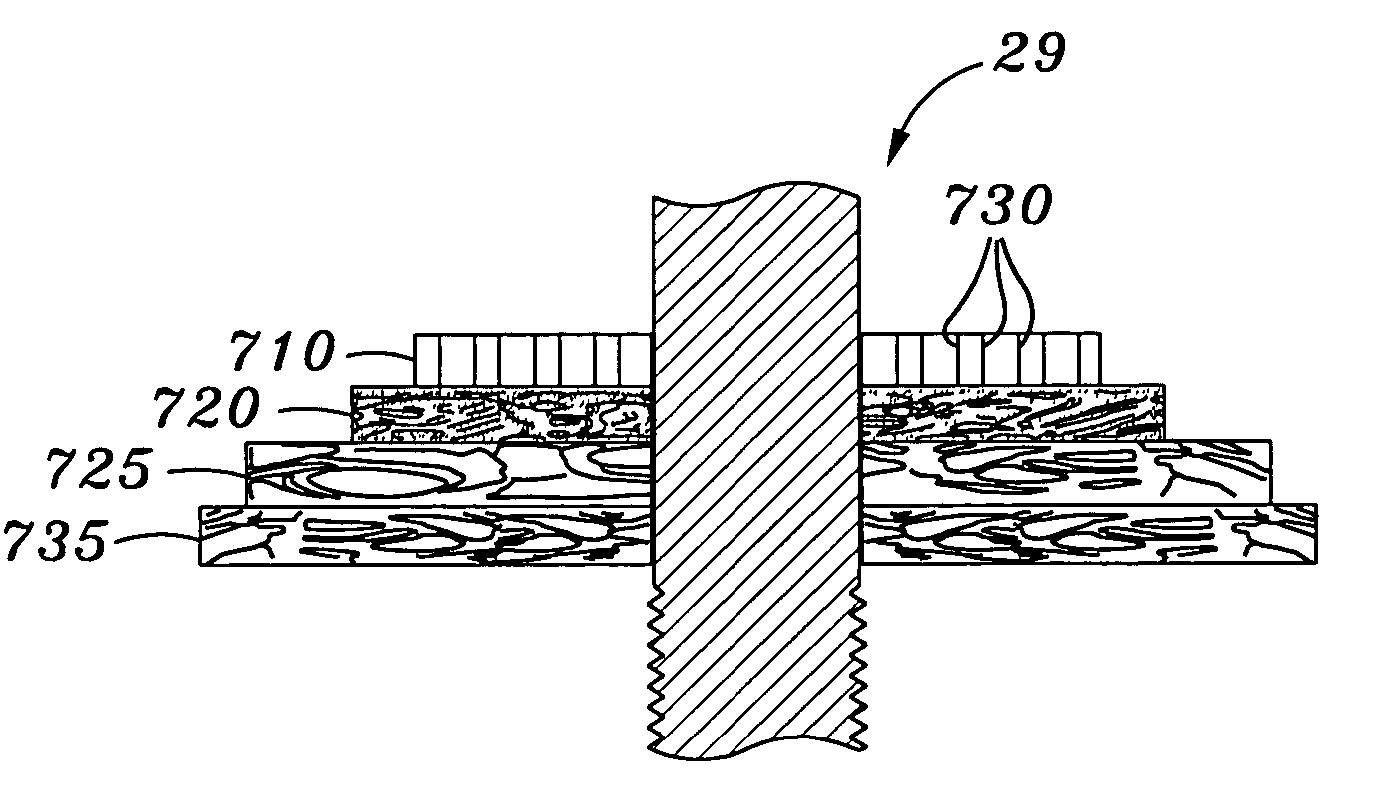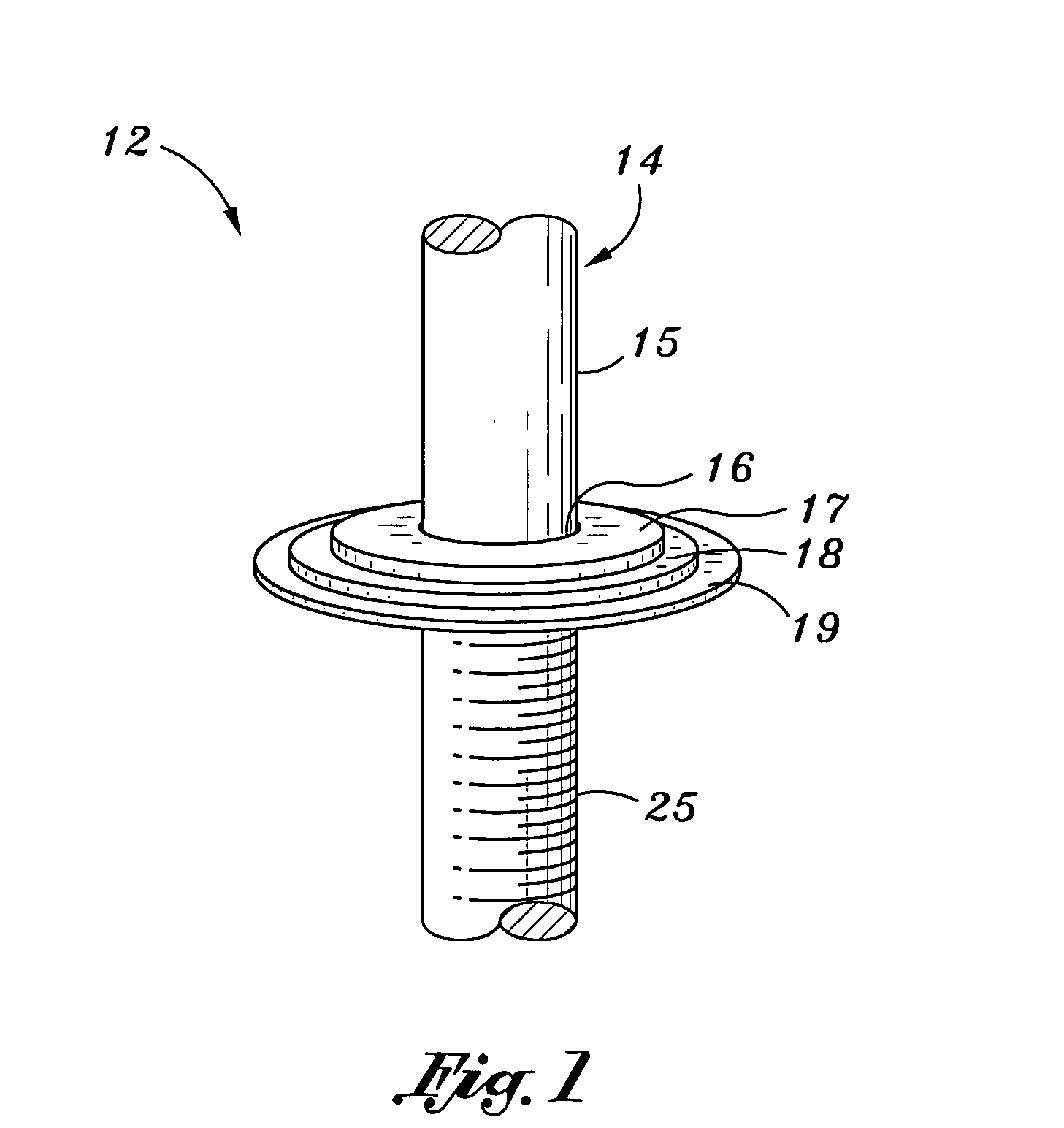Laminar skin-bone fixation transcutaneous implant and method for use thereof
a technology of laminar skin and bone, applied in the field of laminar skin bone fixation transcutaneous implant and the use of it, can solve the problems of significant unmet medical needs, relatively few functionally operational successes achieved, and many individuals who experience functional limitations of their prosthetic devices, etc., to achieve stable sealable ingrowth, enhanced osseoperception, and high failure rate
- Summary
- Abstract
- Description
- Claims
- Application Information
AI Technical Summary
Benefits of technology
Problems solved by technology
Method used
Image
Examples
Embodiment Construction
[0028] With reference to FIG. 1 a schematic rendering of a laminar transcutaneous implant in accordance with the present invention is shown and generally indicated at 12. An implant post generally indicated at 14 comprises an implantation segment 25 adapted for implantation in a bone within a residual limb and an attachment segment 15 adapted for attachment to a prosthesis for an amputee. A transcutaneous segment 16 is attached to a layer 17, a layer 18, and a layer 19 of implant 12. With reference to FIG. 2 a schematic rendering of an enlarged cross sectional view of normal human skin is shown and generally indicated at 10. The epidermis 20 overlies the dermis 30. Dermis 30 overlies the subcutaneous connective tissue 40. Underlying tissue 40 is the muscle layer 50. A hair papilla 60 and a sweat gland 70 are located in tissue 40. Gland 70 extends through a sweat gland duct 80 and exits epidermis 20 through a sweat gland pore 90. Sebaceous glands 100 lubricate hair follicle 110. With...
PUM
 Login to View More
Login to View More Abstract
Description
Claims
Application Information
 Login to View More
Login to View More - R&D
- Intellectual Property
- Life Sciences
- Materials
- Tech Scout
- Unparalleled Data Quality
- Higher Quality Content
- 60% Fewer Hallucinations
Browse by: Latest US Patents, China's latest patents, Technical Efficacy Thesaurus, Application Domain, Technology Topic, Popular Technical Reports.
© 2025 PatSnap. All rights reserved.Legal|Privacy policy|Modern Slavery Act Transparency Statement|Sitemap|About US| Contact US: help@patsnap.com



